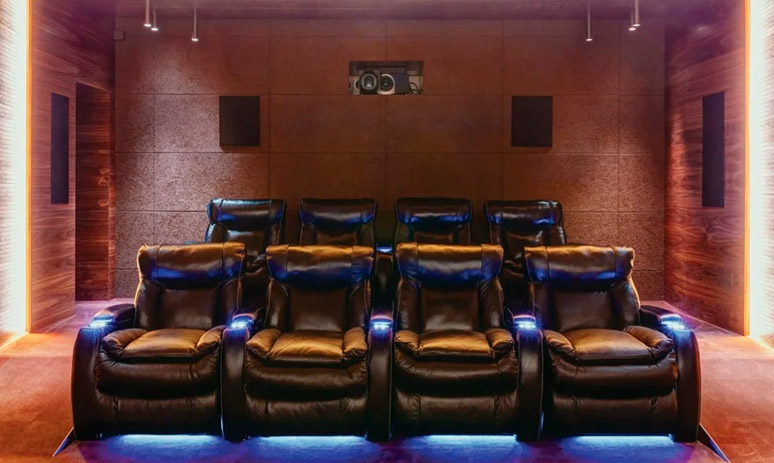Home Theater Acoustics

The modern home theater could not only come close to commercial film screening premises in terms of picture and sound quality but also significantly surpass them. Because, unlike an audience hall for 100 people (a small multiplex hall), all attention is focused there on 3-10 seats; therefore, there are all opportunities to provide the best picture and sound environment for such a restricted area.
As in commercial technology, a multi-channel digital sound system complying with the Dolby standards is used for sounding the audience halls of home theaters. To achieve the most realistic picture of what is shown on the screen, the phonogram must fully and accurately maintain the video sequence of the film's events. For example, if a bird flew to the left of the camera, the viewer must hear the flying object approaching from left clearly, simultaneously with the picture; such object will first catch up with the viewer, and then move somewhere far behind him. After all, a home theater, a multi-seat audience hall allows you to "fine tune" the sound, bringing your experience from watching a film to a new emotional level.
For this purpose, each speaker must be installed in a specific place, and the room itself shall not add any additional nuances to the sound. All timbral sound characteristics, that have been set when dubbing the film, must be carefully preserved and delivered on time to the viewer's ears. In addition, if the film is dubbed in a special acoustically prepared room, for good reproduction of its phonogram, the home cinema room shall also have optimal acoustic characteristics.
A good home theater is always an exclusive work, where everything must be balanced: a high-quality equipment, a suitable room in terms of its size, a correct acoustic design of such room; otherwise, the difference in the sound of a high-quality and an inexpensive system will be simply imperceptible.
Generally, rooms for home theaters have an area of less than 60 sq. m and a ceiling height of not more than 3 m. It means that inevitably, according to the laws of physics, there are problems in such a room related to frequency irregularity of the sound field within the low-frequency range (below 200 Hz). Therefore, for home theater halls, unlike their older "commercial" brothers, a separate work is always performed to correct the low-frequency sound field using special low-frequency (LF) sound absorbers.
When designing home theater rooms (HT), the following principles should be observed:
- The shape and proportions of the HT room should be selected based on the physical principles of sound propagation in confined spaces.
- An LF absorber system should be developed for each specific room, forming a uniform field in the low-frequency range.
- The reverberation time in the room must be within the range as recommended by Dolby. The required reverberation time range depends on the volume of the room.
- The interior of the room shall contain a uniform alternation of sound-absorbing and scattering surfaces, not creating pronounced directed reflections towards the viewer seats.
- Any acoustic defects must be avoided in the hall, such as "fluttering" or "theatrical" echo, caused by using parallel sound-reflecting surfaces and reflective surfaces of a large area.
- The interior decoration of the audience hall shall use environmentally friendly materials, suitable for long-term use, featuring well-known and stable acoustic characteristics.
